As soon as you become a mother, you know that there are going to be a lot of messes to clean up. Babies poop, they vomit, they knock things over, but you’re already prepared for most of that.
What you probably weren’t prepared for is how difficult it is to remove breast milk stains from clothing.
As an Amazon Associate I earn from qualifying purchases. The links below may be affiliate links. Please read my disclosure policy for more information.
The trouble is that breast milk is comprised of so many natural ingredients which makes it an incredibly strong binding protein. So, now we know it’s tough to fight, but that doesn’t make it impossible.
Here, we look into how to remove breast milk stains.
Why Does Breast Milk Stain?
To help babies grow up happy and healthy, breast milk is comprised of a myriad of natural ingredients, including vitamins, fat, protein, and over 800 strains of healthy bacteria. The protein in breast milk is what causes it to stain.
Just like any protein-stain such as blood or fecal matter, breast milk stains are difficult to remove but not impossible.
The main thing to remember when facing any prospective stain is that you have to act quickly. Where protein-based stains are concerned, heat is your enemy, so it is important to keep the stains away from radiators and dryers.
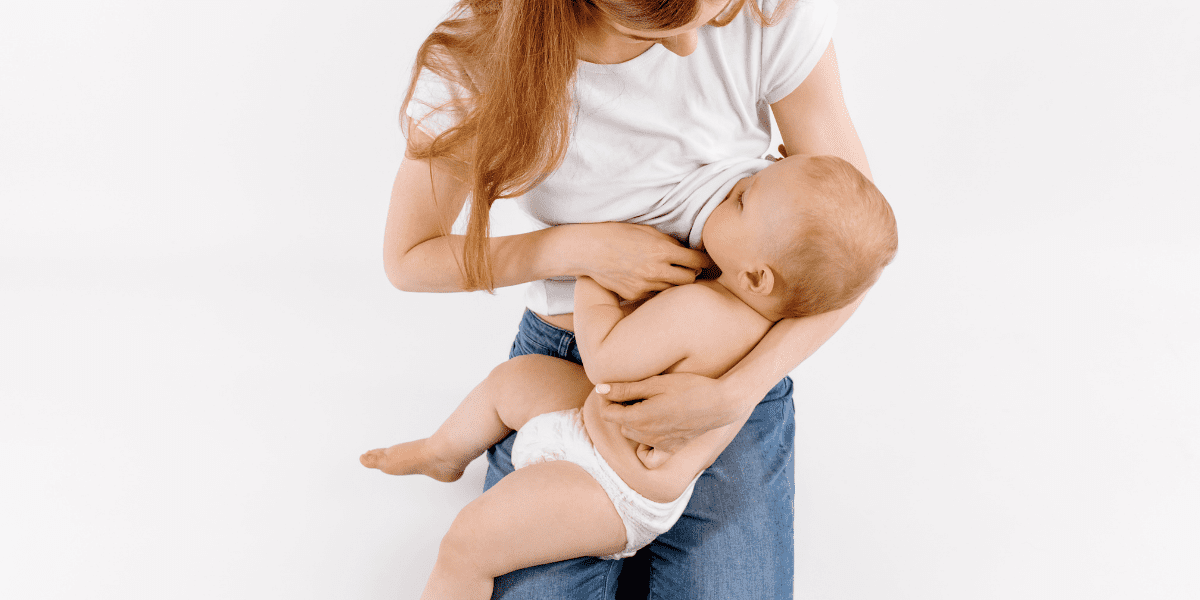
Which Cleaning Products Should I Use?
If you’re here wondering which cleaning products you need to use to get rid of a breast milk stain, the likelihood is that you are the parent/guardian to a baby.
If that’s the case, then you’re going to be around the little tyke more often than not, and you will need a cleaning product that’s safe for them.
Essentially, what you need to look for is the product with the fewest allergens and irritants. There are plenty of available options so finding a stain remover that is both baby-friendly and has enzymes that attack proteins shouldn’t be a problem.
However, if you do plan on using enzyme-based stain removers, then you should know that they cannot be used on certain fabrics such as silk or wool, as they will damage the material.
Can I Use Bleach?
Bleach may seem like the answer to all of your problems since it can kill almost any stain, but it isn’t ideal to use on clothes that you wear around your baby, or clothes that your baby wears.
Bleach is made up of some very harsh chemicals, and although we can stand them, your baby is much more delicate.
Bleach can cause eye, nose, and skin irritation, and in extreme cases, it can even cause skin burns and respiratory issues.
For the sake of your baby, stay away from the bleach and stick to baby-friendly detergents instead.
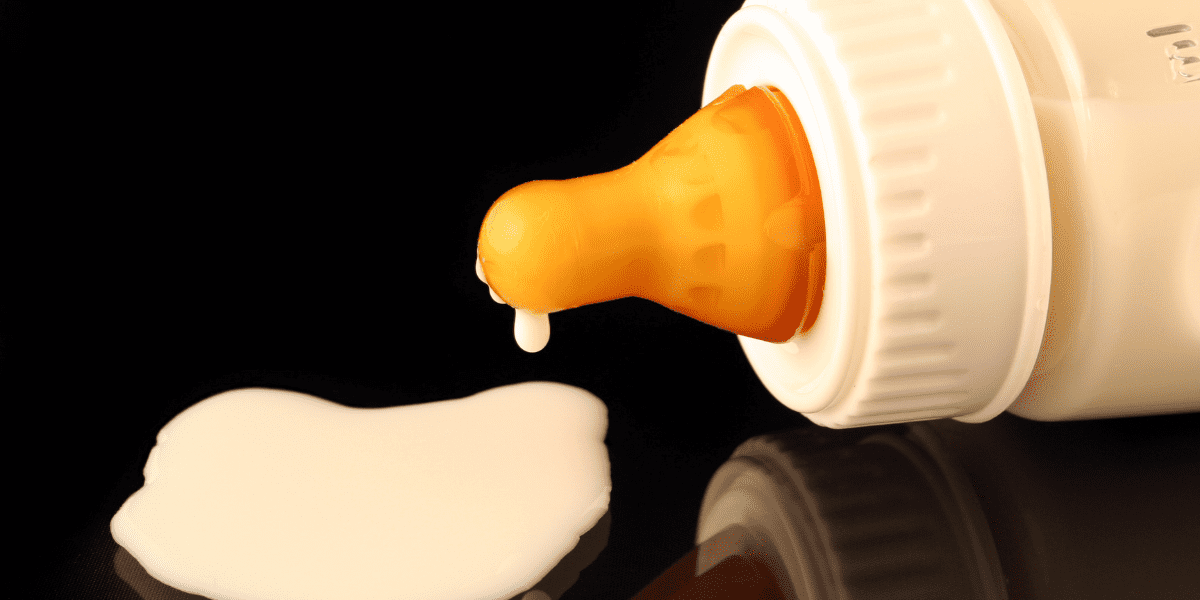
Biological Vs Non-Biological Detergents
When it comes to shopping for baby-friendly products, you will be faced with the choice of whether to get a biological or non-biological detergent.
Biological Detergent
Biological detergents contain enzymes that are great for targeting protein-based stains. They flourish in cooler temperatures, saving you money in the long run with their eco-friendly ways.
However, as with everything, biological detergents have their drawbacks, one of them being that the powerful, stain-targeting enzymes can become a skin irritant, especially where a baby’s sensitive skin is concerned. It is for this reason that some parents prefer non-biological detergents instead.
Non-Biological Detergent
Although non-biological detergents do not contain any enzymes, most are still great at fighting stains, as long as the washing is put on a slightly higher temperature.
While this method isn’t as cost-effective, or eco-friendly, it does have one advantage which is that it very rarely acts as a skin irritant, except to the most sensitive of babies.
Natural Stain Removers
While there are plenty of synthetic stain removers on the market that will help before putting your clothing in the wash, some parents prefer natural stain removers, which can be helpful to those wishing to avoid chemicals.
Lemon / Lime Juice
Lemons and limes are naturally acidic. When the juices are used on white fabric, it acts as a natural bleaching agent which may help break up the stains.
White Vinegar
White vinegar can add a bit of extra power to your detergent. All you have to do is add a ¼ cup of it into your washing cycle and wait for the results.
Hydrogen Peroxide
This can be used as an alternative to bleach, so you can still effectively target any stains, without the risk of skin irritation and chemical burns.
Baking Soda
If you combine ½ a cup of water with four tablespoons of baking soda, you will get a paste that is an effective stain remover; this is especially good against protein-based stains such as those caused by breast milk.
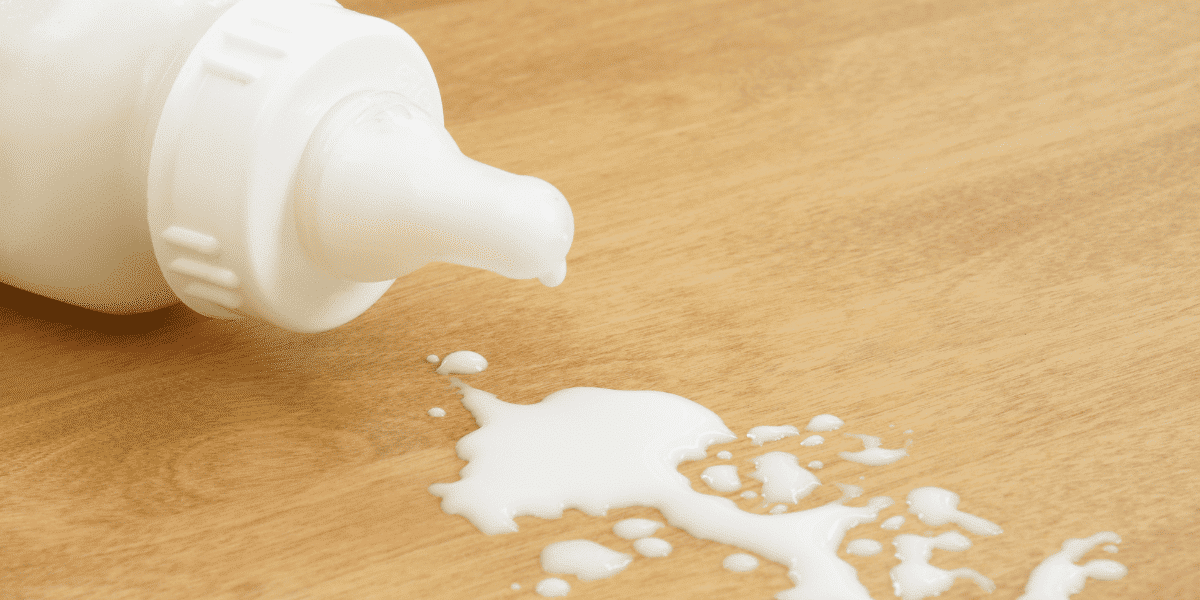
How to Remove Fresh Breast Milk Stains
If you act quickly, you may be able to remove a breast milk stain before it sets. First, you should rinse the stain in cold water, removing as much of it as you can.
Once it has been rinsed, let the fabric soak in cold water for fifteen minutes to prevent the stain from setting. After that, use a toothbrush to gently remove as much of the remaining stain as possible.
Then, follow the instructions on the clothes label to put it on the correct wash setting in your machine.
The final step is to dry the garment, preferably in the sun which is nature’s very own bleaching agent.
Always remember to put stain affected clothes on low heat if you intend on using a radiator, and avoid the dryer if any of the stains remains; heat bakes protein stains into the fabric, making them almost impossible to remove.
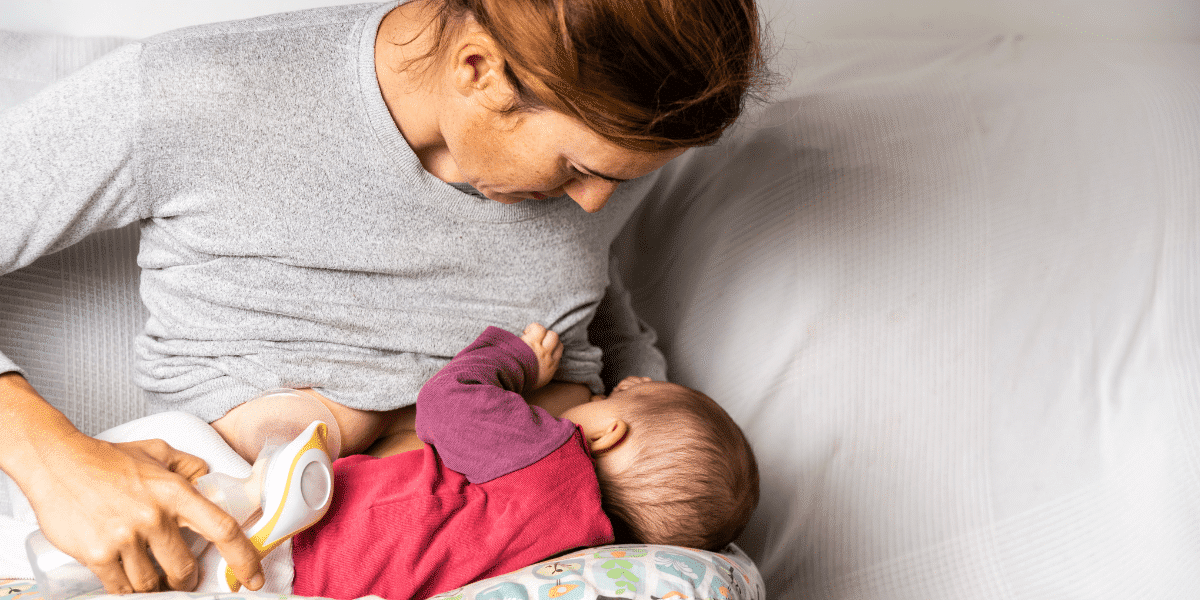
How to Remove Old Breast Milk Stains
Sometimes, we don’t have time to remove stains immediately, or we don’t even notice them until later when they have already been set, and although protein-based stains can be particularly difficult to remove it isn’t impossible to do so.
The first step in treating a set breast milk stain is to rinse it, taking care to scrape away as much of the crusty residue as you can.
After that, treat the stain with a stain remover. Once the stain remover has been applied, try to work it gently into the stain with a toothbrush.
Then let the fabric sit for at least fifteen minutes, giving the stain remover time to break up the stain.
Finally, wash the item, according to its label’s requirements, and then let it air-dry in the sun.
Carpet and Upholstery
Sometimes, the stain that you are struggling with isn’t your clothes or blankets which can be taken to a washing machine. Instead, it could be a spot on the sofa, or an accident on the carpet.
However, if this is the case, there is still hope if you act quickly.
To clean your carpet, upholstery, or unfortunate piece of furniture, the first step is to grab a spoon to scoop up as much of the liquid as you can.
To prevent the stain from growing, you should start from the outside of the stain and work your way in.
Once you have scooped up the majority of the stain, use kitchen roll or paper towels to soak up more of the liquid.
Before the stain has a chance to set, grab a bowl of cold water and a cloth. Dip the cloth in the water and use it to dab at the stain, once again working from the outside in.
Once this is done, pat the affected area with a towel to remove any excess moisture.
After that, create a mixture of two cups of warm water and one tablespoon of liquid dishwashing soap.
Use a sponge or a clean cloth dipped in the mixture to work out the stain; this may take time so don’t panic if it doesn’t fix the problem immediately.
Once you are certain that the stain is gone, use clean water to remove any of the soapy solutions. Then remove any excess moisture with a towel or a dry cloth.
Finally, all you need to do is leave it to air dry, and then vacuum the area if possible.
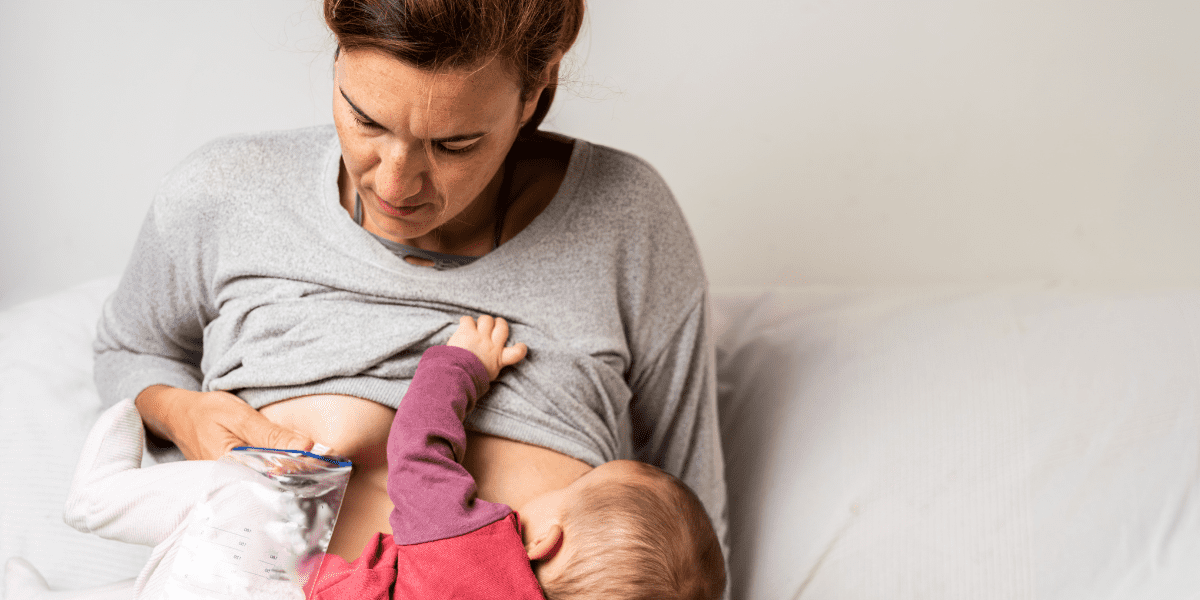
Should the stain remain, you can make a tougher solution of oxygen bleach and cold water, following the instructions on the packaging to get the right ratio of bleach solution to water.
Use a sponge or cloth to apply the mixture to the stained area, and then wait thirty minutes for it to take effect.
After that, use a dry cloth to absorb the excess moisture and then rinse the area, leaving it to air dry afterward, without the use of excess heat.
Before trying any of these methods, make sure to check the material that you plan to clean; some materials such as silk may become damaged by these methods, so you may need to hire a professional instead.
The important thing to remember here is that acting fast could save your favorite clothes from the worst of stains, and if you follow the steps above then you should have no problem with breast-milk stains.
As long as you keep in mind that heat is the enemy here, everything will be fine, and soon you will be a master of keeping everything clean.
